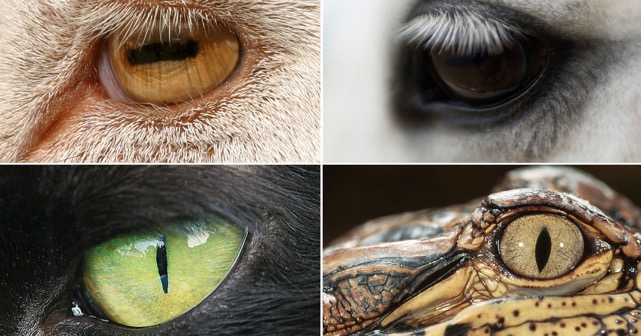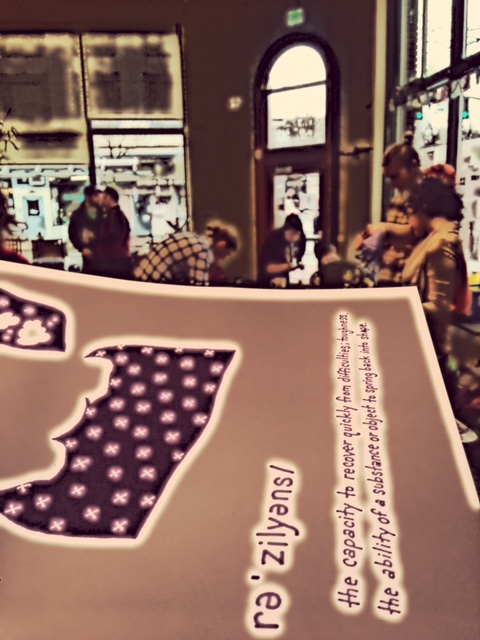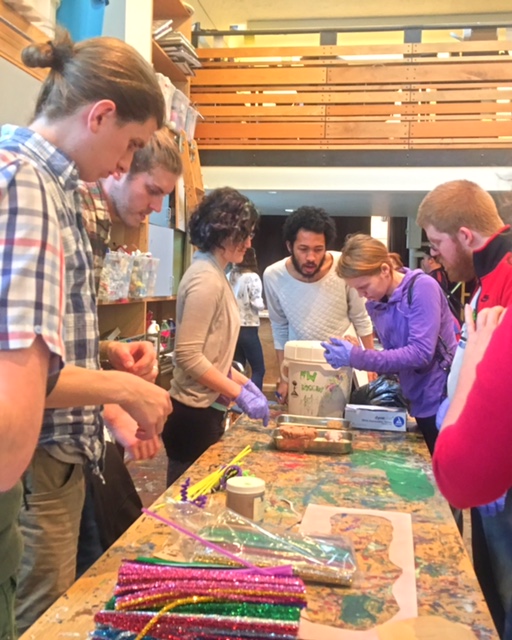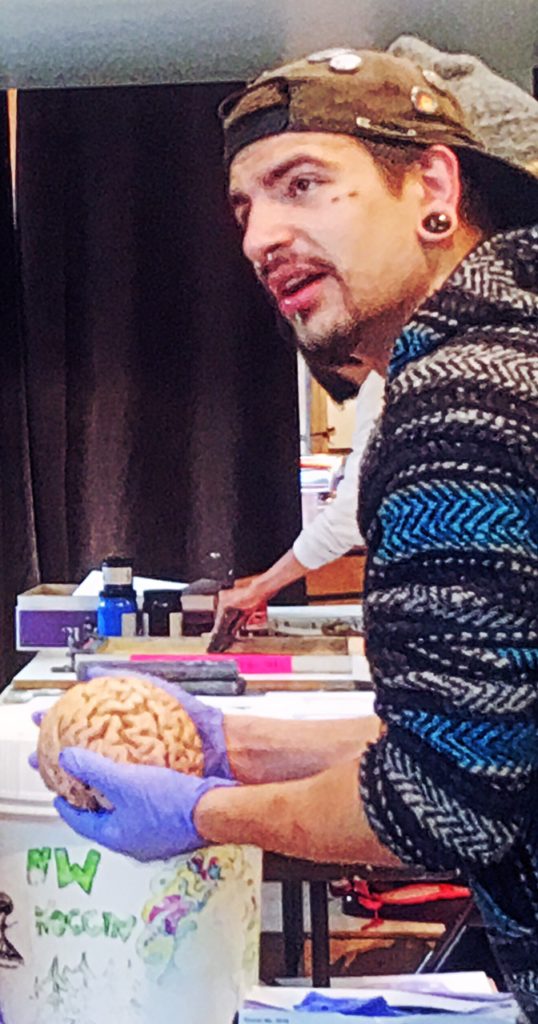Electromagnetic radiation surrounds us, suffuses us, and is absorbed, reflected and emitted by stuff in our environment. It can be described as a spectrum of waves of varying frequencies, from the long waves (low frequencies) associated with radio transmission to the ultra-high frequencies of gamma rays…
Some of this radiation bounces off objects, including chairs and people, touch screens and food, and thus is filled with useful information, a small sliver of which we directly detect. Humans have evolved specialized sensory neurons, that look wildly unique, able to detecting a narrow range of electromagnetic radiation (from 400 to 700nm) associated with our perceptual experience of visible light…
These “photoreceptors” are in the retina, and express special proteins called photopigments found in membranous disks (the recycled record turntables in the sculpture pictured above) which literally absorb the energy and change their shape in response. This is the conversion (or transduction) of one form of energy (the EM radiation) into another (kinetic, or movement) that leads to an electrochemical response in the photoreceptor, and sends electric currents out of the eyes back to the brain where we perceive…
LEARN MORE: Eye Shape May Help Distinguish Predator From Prey
There are all sorts of specialized neurons in our extraordinary brains, and young people at P:ear in downtown Portland had penetrating questions about their various structures and forms, and both the benefits and limits of what energies we’re capable of responding to…
“The world of reality has its limits; the world of imagination is boundless” Jean-Jacques Rousseau
One young person was particularly fascinated with those visual system limitations, and asked what additional information we might be missing about various aspects of our world. We only see what we’re able to detect, based on what those specialized photoreceptors respond to, but it’s a narrow range of radiation, and exaggerates wavelengths associated with reds and greens…
Image by Helga Kolb, at the University of Utah, who is one of the most cited vision scientists in the world…
LEARN MORE: The Organization of the Retina and Visual System
This was a terrific morning at P:ear. Scott Jones, Brittany Alperin and Sam Carpenter from Behavioral Neuroscience at OHSU, Jessica Patching-Bunch and Gaile Parker from Psychology at PSU, and Jeff and myself enjoyed compelling conversations with some rather sharp, opinionated and curious teenagers…
We’d brought a pile of colorful pipe cleaners for crafting neurons of all shapes and sizes, while answering some of the best questions we get anywhere from Portland to DC!
For example: “If you laid all your axons end to end, how far would they go?”
Sam Carpenter from Damien Fair’s Behavioral Neuroscience lab quickly tackled the challenge!
From Sam: “Assuming CNS axons are an average 1mm in length X 86 billion of them: 8.6E10 axons * 1E-6 km = 8.6E4 km or 86 thousand km (~53 thousand mi.) Roughly twice the circumference of the Earth. If they were airline miles, you’d have 2 trips around the world…minus blackout days..!”
That kid was impressed…
So many thanks to Sarah Louise, Will Kendall, and everyone else at P:ear! Looking forward to our Noggin Tuesday next week…





















